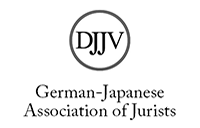Die Methodik des Zivilrechts in Japan – Entwicklung und Struktur
Abstract
This paper describes the development of modern civil law theory in Japan, its structure and its particularities. In particular Japanese literature on this topic that has been published after the publication of Guntram Rahn’s book [Rechtsdenken und Rechtsauffassung in Japan, C.H. Beck 1990] has been taken into consideration. The main developments starting with Suehiro’s and finishing with Hirai’s legal theory are described. Suehiro’s legal theory can be regarded as a first important turning point in the history of legal methodology. Hirai developed his theory of argumentation subsequently and in view of the theory of balancing interests. It strongly influences current civil law methodology. This paper aims at, from the inside view, clarifiying what precisely the characteristics of the various legal theories and their interrelations are. Therefore, it starts with an overview of the legal theories before World War II, in particular of the theories of Suehiro and Wagatsuma. After this, the dispute over the right method of interpreting laws that erupted in the early years after World War II, with Kurusu and Kawashima as its major protagonists, and thereafter the theories of Katō and Hoshino on balancing interests as well as the following discussion on these will be outlined. Thereafter, Hirai’s theory of argumentation will be discussed. Finally the paper examines the differences between the German and Japanese approaches toward legal methodology. The paper’s general intention is to foster a better understanding of the development and structure of Japanese civil law methodology and the state of the discussion today.
(The Editors)






